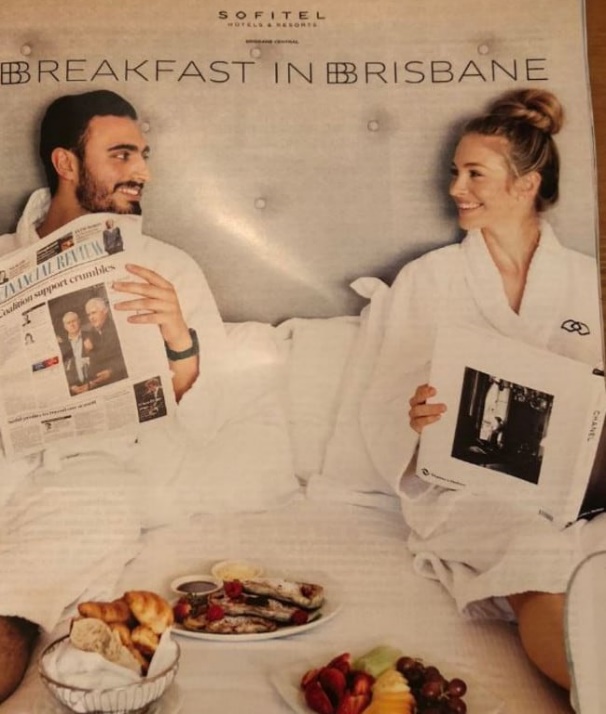Introduction
The views on the role of the producers and the audience are changing and evolving as time goes by. The traditional narrative places most of control over the perceived narrative over the creators of media products, placing the audience into the position of passive consumption of whatever messages content creators put into their work (Shaw, 2017). However, these ideas have been since challenged by researchers such as McQuail (2013), who argues that “the notion of an audience as seen in earlier times seems largely redundant, as there are no discrete categories of senders and receivers (the audience), no discrete media with their own loyal users” (pp. 18-19). In the 21st century, which is becoming extremely familiar with all kinds of media content, the ability of an individual to interpret and decode a message is becoming increasingly prevalent (Akestam et al., 2017). The failure to account for how an advertisement would be perceived by the audience has already led several companies and products towards controversy. This paper will demonstrate the validity of McQuail’s claim by examining the controversy surrounding a small paper advertisement by Sofitel Brisbane, Australia.
Sofitel Ad
In 2018, Sofitel Brisbane released an advertisement as a part of their catalogue, advertising their services, including breakfast-in-bed deal for customers that want it. The advertisements featured a man and a woman lying together in bed, with food laid out between them (Sullivan, 2018). The food included fruits, pastry, and other confectionary treats for customers’ enjoyment. They were dressed in white bathing robes. The man held a copy of Financial Review, whereas the woman held a Chanel coffee book about latest fashion (Sullivan, 2018). The image as found in the advertisement printed out at the time can be found below (see Figure 1).

Producers’ and Viewers’ Perceptions of the Advertisement
The message that producers wanted to convey is simple enough. They advertise a luxurious service, which is showcased by the perfectly-white sheets, clean bathing clothes, a soft background, and delicious treats at the front. These are meant to attract attention due to the variety of colors. The actors are both beautiful, well-groomed models, with the choice having been made to make the audience associate themselves with these people (Sokol & Slupinska, 2019). The books and newspapers given to them are large of no consequence – they are there to occupy their hands (a stylistic choice), and supposedly serve no narrative purpose other than looking pretty (Sokol & Slupinska, 2019). It is a fairly basic hotel advertisement that was mirrored numerous times by many competing brands, to the point of generating a standard of its own (Hollenbeck et al., 2019). Here are a few advertisements and photos similar in the idea and the intended message to Sofitel’s advertisement (see Figure 2).



As it is possible to see, the encoded message is fairly standard in terms of instruments it uses to convey itself to the audience. However, a message, however apparently “clear” and “standard” it may be, remains in a fluid state until it is decoded by the audience in a way an advertiser wants it (Hall, 2001). Instead of being passive receivers, as the traditional theory suggests, the viewers decode the perceived message in the advertisement in accordance with their own beliefs and the overarching narratives in the society (Cohn, 2020). While Sofitel meant to convey messages like “comfort, luxury, status, and deliciousness,” the focus of the increasingly politicized society went towards “sexism, gender roles, objectification, and stereotypes.
The producers’ dominant-hegemonic reading conception of enforcing a specific narrative presumes linearity between encoders, decoders, and the message (McQuail, 2013). This concept, criticized by McQuail, backfired, as the interpretations of the issue branched out based on individuals’ perception of what served as the key subliminal messages behind the advert, and on whether or not it was intentional (Timke, 2020). One group of viewers thought the message was inherently sexist, denigrating women to token trophies who cannot find any interest in finances, sciences, and similar fields classified as ‘manly’ by the gender-normative traditions (Hall et al., 2013). They found the female actor being settled with a Chanel fashion book as inherently offensive to their system of beliefs, which stood for rejection of traditional gender narratives and being pro-freedom of choice in vocation and other areas (Gurrieri et al., 2019). These people accused Sofitel of being thoughtless at best, and sexist at worst, having decoded the message in this specific way.
The second group of viewers stood up in Sofitel’s defense, though not because they cared much about the advertisement in itself or accepted either the dominant-hegemonic message as intended, or the sexist-centric decoded view of the first group (Margan & Lackey, 2018). Their interest in the advertisement and its message was largely fueled by the presence of the vocal minority of the first group, soliciting a response adverse to them (Lilja & Johansson, 2018). This group, thus, decoded not the message itself but the reaction to the message. Finally, the third group of viewers accepted the intended narrative with no issue, and had no particular qualms neither with it, nor with the choice of artistic instruments utilized to convey it (Margan & Lackey, 2018). They rejected the narrative of the first group and largely presented themselves as pro-Sofitel, despite the controversy generated around it.
The Use of Media in Spreading Controversy
Only 30-40 years ago, the events transpiring around Sofitel advertisement would not have caused an outrage similar to that garnered in 2018. It would have never gotten far on TV, in newspapers, or on the radio, reduced to small talk between a couple of disgruntled visitors. In the 21st century, however, the ability to spread information is greatly increased, due to the dominance of social media (Khosravinik, 2018). The vehicle for informing the Australian society of the Sofitel controversy was largely Twitter, where several women posted their views on the decoded message of the advert. One of them stated that “I’m a woman and I also read the @FinancialReview every day,” whereas the other one criticized the Chanel book for being dull and boring (Sullivan, 2018, para. 3). There were about ten more comments of a similar nature, all pointing out that women would be more interested in stocks than hems. These comments gathered several hundred likes and a few dozen comments. Some of the rarer messages also criticized the placement of the fruit bowl next to the woman, as they decoded the positioning as a subtle message that women should stay healthy and fit, as a form of objectification (Thille et al., 2017).
The outrage was not one-sided, however, as some users stood behind Sofitel, for their own socially-constructed reasons. Some users felt the attacks on Sofitel were unsolicited, and called it a “feminist outrage that should be ignored,” whereas another told the first group of users to “find an actual issue with women’s rights to worry about” (Margan & Lackey, 2018, p.). Finally, the third group of users pointed out that there is nothing inherently wrong with reading a Chanel book, and that what one wants to read depends on choice, and not gender politics (Margan & Lackey, 2018). Nevertheless, Sofitel found the attention of other sources of media (the story was featured in a dozen of online portals) to be not worth the trouble, and retracted the advertisement, issuing a formal apology for the unintended consequences.
Conclusions
McQuail’s assessment that the audience ceased being passive recipients of messages and information and have become active listeners and decoders of information. The dominant-hegemonic model, which was prevalent during the pre-Internet era, is no longer relevant, as users can communicate between each other more freely, share their opinions, and translate their own decoded messages to others. Sofitel is an example of how a relatively innocent advertisement can cause reputational losses because of an outdated view on the audience, the message, and the potential for its interpretation. Many companies choose to embrace one particular narrative over others, rather than trying to make an advertisement that would be interpreted the same way and appease everyone equally. The media plays an important role in the success, failure, or controversy surrounding such efforts.
References
Åkestam, N., Rosengren, S., & Dahlen, M. (2017). Advertising “like a girl”: Toward a better understanding of “femvertising” and its effects. Psychology & Marketing, 34(8), 795-806.
Cohn, N. (2020). Visual narrative comprehension: Universal or not? Psychonomic Bulletin & Review, 27(2), 266-285.
Gurrieri, L., McKenzie, M., & Bugden, M. (2019). Community responses to gender portrayals in advertising. Women’s Health Issues Paper, 15, 2-38.
Hall, S. (2001). Encoding/Decoding. In M.G. Durham & D.M. Kellner (Eds.) Media and cultural studies: Keyworks (pp. 166-176). Malden, MA: Blackwell Publishers.
Hall, S., Evans, J. & Nixon, S. (2013). Representation. New York: SAGE Publications.
Hollenbeck, B., Moorthy, S., & Proserpio, D. (2019). Advertising strategy in the presence of reviews: An empirical analysis. Marketing Science, 38(5), 793-811.
Khosravinik, M. (2018). Social media techno-discursive design, affective communication and contemporary politics. Fudan Journal of the Humanities and Social Sciences, 11(4), 427-442.
Lilja, M., & Johansson, E. (2018). Feminism as power and resistance: An inquiry into different forms of Swedish feminist resistance and anti-genderist reactions. Social Inclusion, 6(4), 82-94.
Margan, M., & Lackey, B. (2018). Turns out this advertisement ISN’T sexist! Poll reveals most people think controversial hotel promotion that divided the internet is perfectly fine.Daily Mail Australia. Web.
McQuail, D. (2013). The media audience. Communication Review, 13(1-2), 9-20.
Shaw, A. (2017). Encoding and decoding affordances: Stuart Hall and interactive media technologies. Media, Culture & Society, 39(4), 592-602.
Sokół, A., & Słupińska, K. (2019). Creative management of the advertising form and content. Entrepreneurship and Sustainability Issues, 7(2), 842.
Sullivan, R. (2018). He’s reading the AFR, she’s reading a Chanel book: Why women are angry about Sofitel hotel ad.NewsCom AU. Web.
Thille, P., Friedman, M., & Setchell, J. (2017). Weight-related stigma and health policy. CMAJ, 189(6), E223-E224.
Timke, E. (2020). Key Concepts in Advertising: Social Tableaux. Advertising & Society Quarterly, 21(4), 1-10.